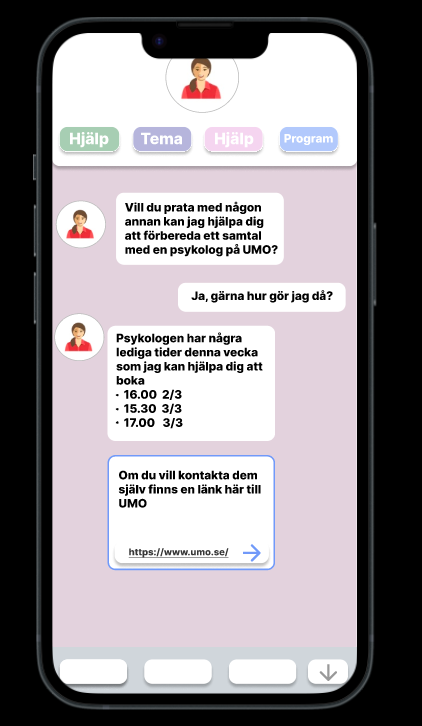Project two
In this course, we collaborated with a client who required assistance with an idea he had. He was a psychologist and expressed a need for a prototype for an app featuring an AI chatbot that could help teens with their mental illness.
With this project, my group and I aimed to provide support for teenagers facing difficult situations by offering resources for contacting someone for help or having a conversation with an AI chatbot. However, we also emphasized the importance of encouraging them to reach out to a real person, whether it be a family member or a school counselor. While the client desired more extensive capabilities from the AI, our research led us to develop the service as a guide rather than a complete solution, ensuring that users would not overlook the value of seeking support from real individuals.
Methods
We conducted desktop research to gain insight into the current landscape of similar services and to identify existing safety concerns. This involved analyzing existing platforms and their features, as well as studying reports and articles discussing online safety issues.
Additionally, we conducted interviews with professionals working in the field of online safety to gain a deeper understanding of the major problem areas. These interviews provided valuable insights into emerging threats, common vulnerabilities, and best practices for mitigating risks.
Furthermore, we conducted surveys among potential users to gauge their experiences with online safety and to identify their specific needs. These surveys helped us understand the extent to which users encounter unsafe situations online and what measures they believe would enhance their online safety.



